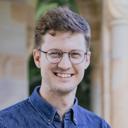A Recent History of Python Through Stack Overflow Questions and Answers
Part of the All Things Data! specialist track
From Python 0.9's public release in 1991 it has grown to be one of the most widely used programming languages, including prominence in many domains from web apps to machine learning. While there is never going to be any single explanation of why or how Python reached this point, Python's past can help inform our collective future. In this talk I will introduce a novel Python tool for interactive text analytics to tell a recent history of Python, as seen through the Python questions and answers on Stack Overflow.
See this talk and many more by getting your ticket to PyCon AU now!
I want a ticket!If you've searched the web to solve a programming related issue you've probably come across Stack Overflow, the programmer focused question and answer site. Stack Overflow questions and answers are contributed by a community of users and represent a large body of public and openly licensed data about how Python is used by a particular group of programmers. Stack Overflow's high ranking in search results and associated web traffic gives the site prominence for programmers beyond the narrow demographics of Stack Overflow itself.
As of writing there are over two million questions tagged Python on Stack
Overflow - there aren't enough hours in the day to read through that! For
this talk I'll introduce an approach to computational text analytics as a
starting point for making sense of all of this data. I'll show off a new
library for interactive text analytics that lets us start tackling data like
this with nothing but a laptop. But I'll also show that computing alone isn't
enough! The human work of analysis and interpretation is needed to come up
with something meaningful that is actually grounded in the data.

Sam is a post-doctoral research fellow at School of Languages and Cultures at the University of Queensland. He learned Python way back in 2007 for physical simulations and has been using it in various ways ever since. He now works on building computational tools for text analytics that center human interpretation and decision making.